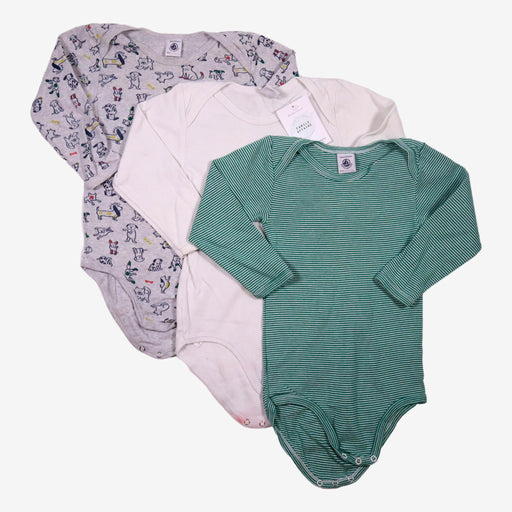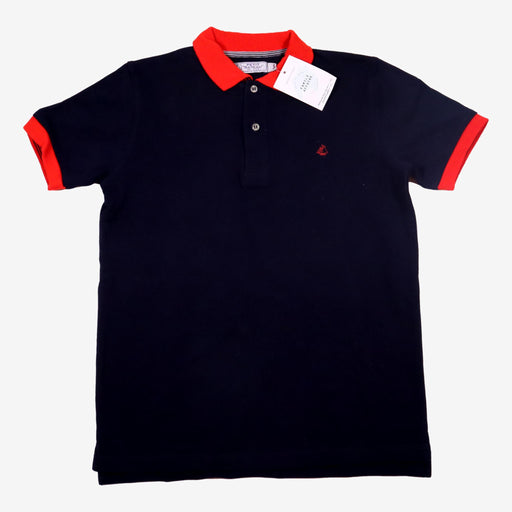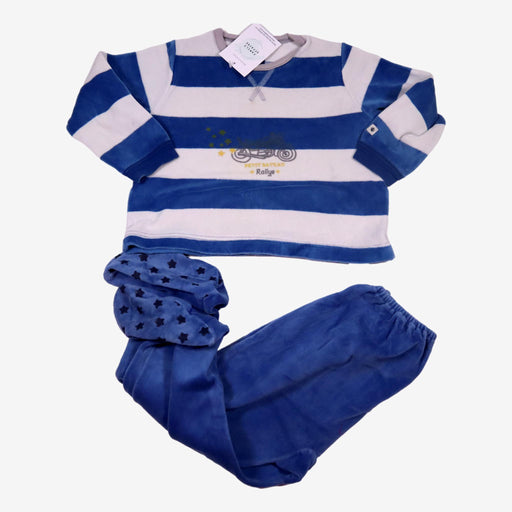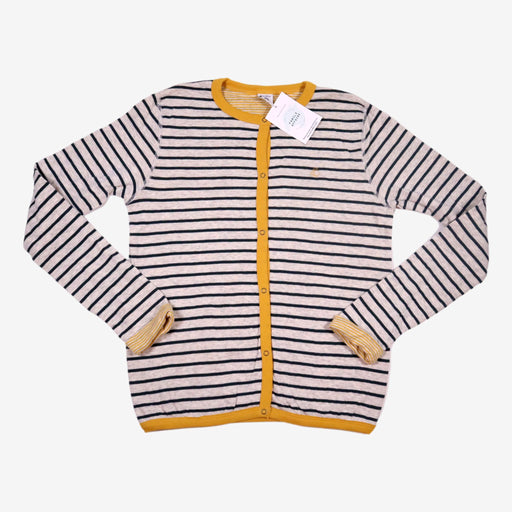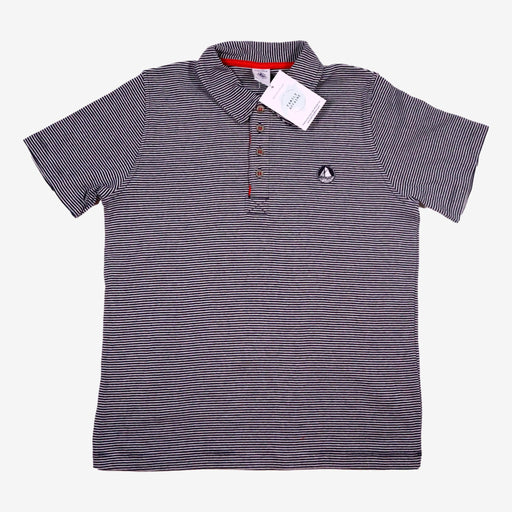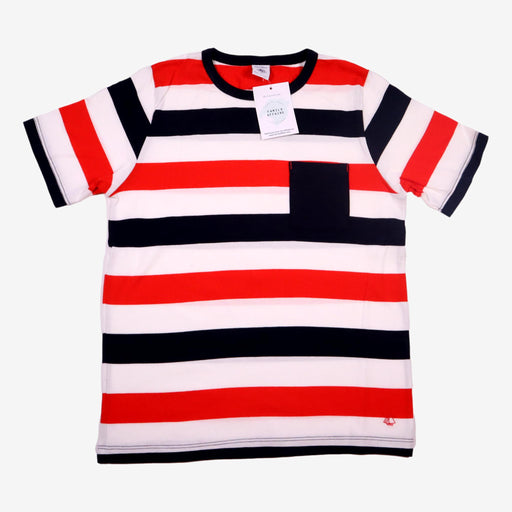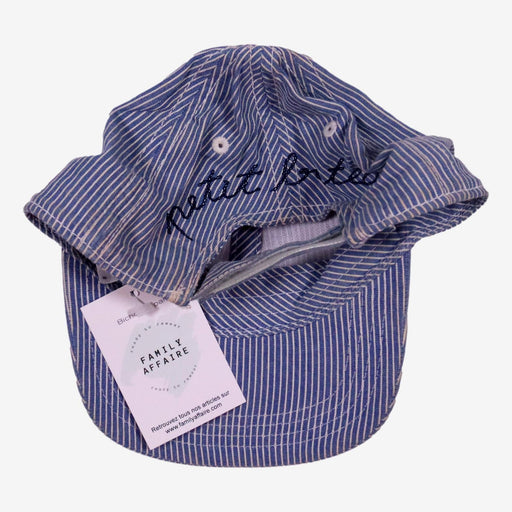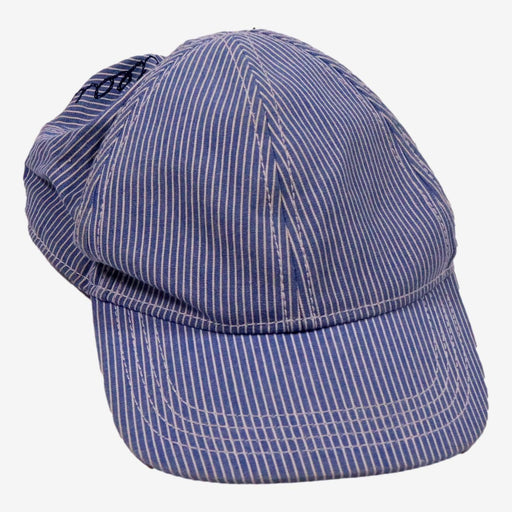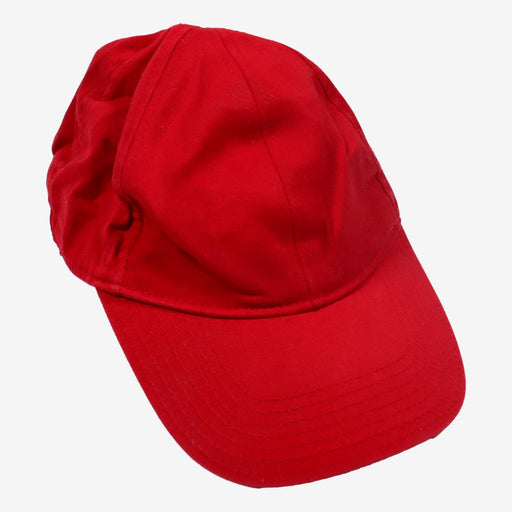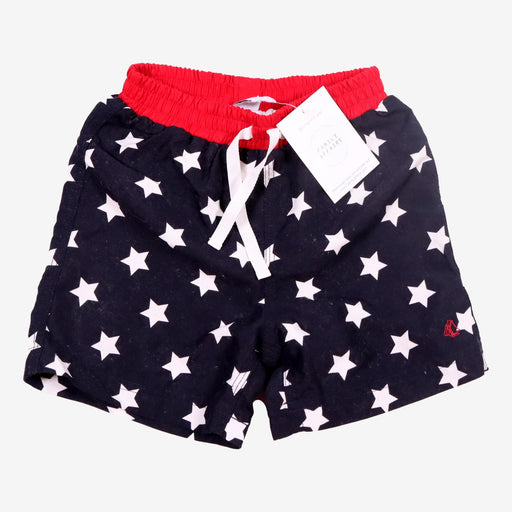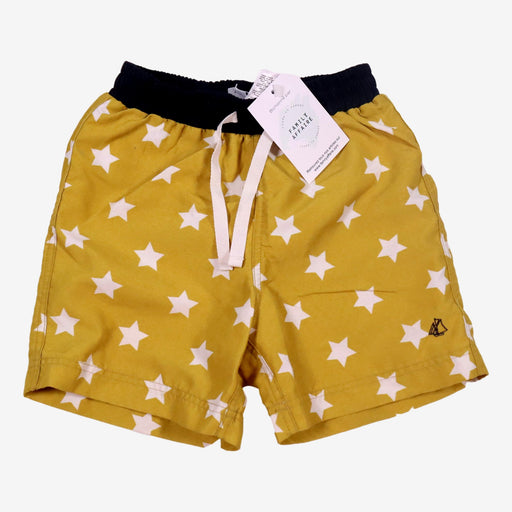
Exploring Petit Bateau's Kids Clothing: the French touch
A marriage of French touch and classic design, Petit Bateau has been a staple in quality children's clothing since its factory opened in the small town of Troyes in 1893. Over the years, this renowned maker of colorful cotton garments and underwear has grown to become a global presence in fashion for kids, women, and men alike. Join us as we explore the story of this iconic brand and its remarkable journey from France to the world.
The History of Petit Bateau
Petit Bateau is an iconic French brand of clothing and underwear for children, founded in the early 1920s with origins dating back to 1893 in Troyes. It has been a beloved name within the fashion industry, particularly due to its high-quality materials and classic designs.
The Origins of Petit Bateau
The roots of this storied brand began when two companies – Bonnier et Cie and Lefèvre-Utile – merged together in 1893. From that point onwards, what would eventually become known as Petit Bateau was born.
It started by selling babies' hats, shirts and pantie products from their factory in France.
The Evolution of the Brand
Over the years, the company’s product range expanded to include clothing for women, children and adults. In the 2000s, they launched their first adult collection, making them one of the few kids clothing brands that offer apparel for many different generations.
The Famous Petit Bateau Design
Since its inception, Petit Bateau has been known for its classic design and use of high-quality fabrics such as cotton and wool. This look has become part of their signature style, which can be seen in their clothing today.
The Quality of Petit Bateau Products
The Use of High-Quality Fabrics
Petit Bateau only uses certified organic cotton for their clothing and underwear—which means that it is grown without pesticides or fertilizers—in order to provide customers with a safe and healthy fabric choice.
Attention To Detail In Design And Production
In addition to using quality fabric, every single detail in the design process—from sketching out the garment’s pattern to how it is crafted—is done with extreme care and attention. This ensures that each piece lives up to the highest standards in terms of quality.
The Durability Of Petit Bateau Clothing
Not only are all clothes made from quality materials but they are also incredibly durable - so you know your child will get plenty of wear from his/her favourite pieces! Plus, these garments can easily be passed down through generations without losing shape or colour over time.
Petit Bateau Today
The Expansion Of The Brand
Today , Petit Bateau has shops all around the world including Asia , Europe , North America and Australia . They continue to expand their offerings with new collections for both children and adults every year .
Recently , they have even opened up stores dedicated solely to Petit Bateau products !.
The New Collections For Children And Adults
Each season brings something new from Petit Bateau - whether it's bright colours or subtle patterns - there's sure to be something your family will love ! Their latest collection features stylish yet comfortable options for both men and women , while still keeping true to their classic look . Not only do they offer looks designed specifically for adults , but they also offer matching outfits for families to wear together .
The Future Of Petit Bateau In The Fashion World
Petit Bateau has become a beloved classic in the fashion world with its iconic style and quality designs. As they continue to grow, they show no signs of slowing down - so you can trust that the brand will remain relevant for years to come !
Petit Bateau
-
PETIT BATEAU 4 ans Lot de 3 bodies
Prix d'origine 15,00€ - Prix d'origine 15,00€Prix d'origine15,00€15,00€ - 15,00€Prix actuel 15,00€Profitez d'un lot de 3 bodies PETIT BATEAU pour votre enfant de 4 ans. Avec un rayé vert, un blanc et un gris motif chien, ces bodies offrent un co...
Afficher tous les détailsPrix d'origine 15,00€ - Prix d'origine 15,00€Prix d'origine15,00€15,00€ - 15,00€Prix actuel 15,00€ -
PETIT BATEAU 12 ans Polo marine col rouge
Prix d'origine 12,00€ - Prix d'origine 12,00€Prix d'origine12,00€12,00€ - 12,00€Prix actuel 12,00€Ce polo PETIT BATEAU en taille 12 ans est un essentiel pour la garde-robe de votre enfant. Avec son col rouge, il apporte une touche de couleur élé...
Afficher tous les détailsPrix d'origine 12,00€ - Prix d'origine 12,00€Prix d'origine12,00€12,00€ - 12,00€Prix actuel 12,00€ -
PETIT BATEAU 3 ans Ensemble pyjama velours rayé bleu et blanc
Prix d'origine 12,00€ - Prix d'origine 12,00€Prix d'origine12,00€12,00€ - 12,00€Prix actuel 12,00€Cet ensemble pyjama en velours est parfait pour votre enfant de 3 ans. Avec son motif rayé bleu et blanc, il offre un look à la fois classique et t...
Afficher tous les détailsPrix d'origine 12,00€ - Prix d'origine 12,00€Prix d'origine12,00€12,00€ - 12,00€Prix actuel 12,00€ -
PETIT BATEAU 12 ans Gilet boutons pressions rayé
Prix d'origine 15,00€ - Prix d'origine 15,00€Prix d'origine15,00€15,00€ - 15,00€Prix actuel 15,00€Ce beau gilet PETIT BATEAU de taille 12 ans est doté de boutons pressions et d'un motif rayé en bleu et gris avec des bordures jaunes. L'alliance ...
Afficher tous les détailsPrix d'origine 15,00€ - Prix d'origine 15,00€Prix d'origine15,00€15,00€ - 15,00€Prix actuel 15,00€ -
PETIT BATEAU 12 ans Polo rayé bleu et blanc
Prix d'origine 12,00€ - Prix d'origine 12,00€Prix d'origine12,00€12,00€ - 12,00€Prix actuel 12,00€Ce polo rayé bleu et blanc PETIT BATEAU en taille 12 ans allie style et confort pour votre enfant. Parfait pour toutes les occasions, du quotidien ...
Afficher tous les détailsPrix d'origine 12,00€ - Prix d'origine 12,00€Prix d'origine12,00€12,00€ - 12,00€Prix actuel 12,00€ -
PETIT BATEAU 12 ans T-shirt rayé rouge et bleu
Prix d'origine 12,00€ - Prix d'origine 12,00€Prix d'origine12,00€12,00€ - 12,00€Prix actuel 12,00€Ce t-shirt rayé rouge, bleu et blanc de PETIT BATEAU, taille 12 ans, est un choix élégant pour les jeunes garçons. Parfait pour les activités du qu...
Afficher tous les détailsPrix d'origine 12,00€ - Prix d'origine 12,00€Prix d'origine12,00€12,00€ - 12,00€Prix actuel 12,00€ -
PETIT BATEAU 2/3 ans Casquette rayures brodée
Prix d'origine 14,00€ - Prix d'origine 14,00€Prix d'origine14,00€14,00€ - 14,00€Prix actuel 14,00€Découvrez notre casquette PETIT BATEAU 2/3 ans rayée, avec une broderie sur la languette derrière. Pratique et élégante, elle protège votre enfant ...
Afficher tous les détailsPrix d'origine 14,00€ - Prix d'origine 14,00€Prix d'origine14,00€14,00€ - 14,00€Prix actuel 14,00€ -
PETIT BATEAU 3/4 ans Casquette rouge
Prix d'origine 14,00€ - Prix d'origine 14,00€Prix d'origine14,00€14,00€ - 14,00€Prix actuel 14,00€Découvrez cette casquette rouge PETIT BATEAU pour enfant âgé de 3 à 4 ans. Fabriquée avec des matériaux de qualité supérieure, elle offre une prote...
Afficher tous les détailsPrix d'origine 14,00€ - Prix d'origine 14,00€Prix d'origine14,00€14,00€ - 14,00€Prix actuel 14,00€ -
PETIT BATEAU 2 ans Short de bain étoiles noir
Prix d'origine 14,00€ - Prix d'origine 14,00€Prix d'origine14,00€14,00€ - 14,00€Prix actuel 14,00€Ce maillot de bain PETIT BATEAU pour les tout-petits de 2 ans est parfait pour les journées à la plage ou à la piscine. Avec son design étoilé noir...
Afficher tous les détailsPrix d'origine 14,00€ - Prix d'origine 14,00€Prix d'origine14,00€14,00€ - 14,00€Prix actuel 14,00€ -
PETIT BATEAU 3 ans Short de bain étoiles jaune
Prix d'origine 14,00€ - Prix d'origine 14,00€Prix d'origine14,00€14,00€ - 14,00€Prix actuel 14,00€Ce short de bain PETIT BATEAU pour 3 ans est un choix parfait pour votre enfant ! Avec son design étoilé jaune, il apportera une touche de style à ...
Afficher tous les détailsPrix d'origine 14,00€ - Prix d'origine 14,00€Prix d'origine14,00€14,00€ - 14,00€Prix actuel 14,00€ -
PETIT BATEAU 4 ans Débardeur blanc
Prix d'origine 4,50€ - Prix d'origine 4,50€Prix d'origine4,50€4,50€ - 4,50€Prix actuel 4,50€Ce débardeur blanc de PETIT BATEAU est le choix parfait pour les enfants de 4 ans. Fabriqué avec des matériaux de qualité, il garantit confort et d...
Afficher tous les détailsPrix d'origine 4,50€ - Prix d'origine 4,50€Prix d'origine4,50€4,50€ - 4,50€Prix actuel 4,50€

